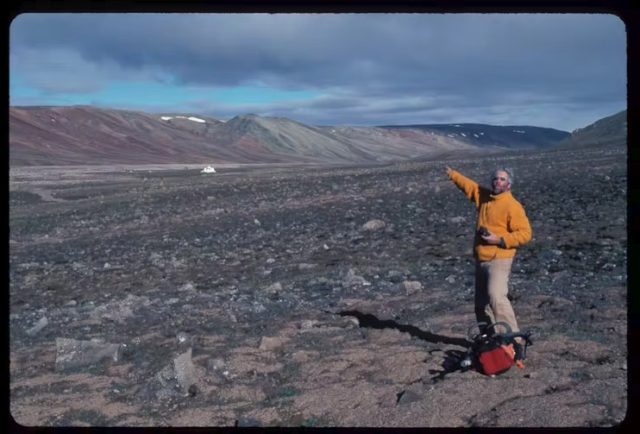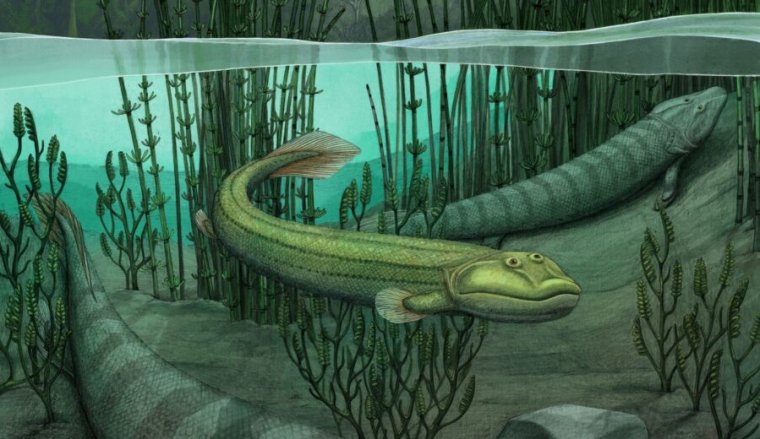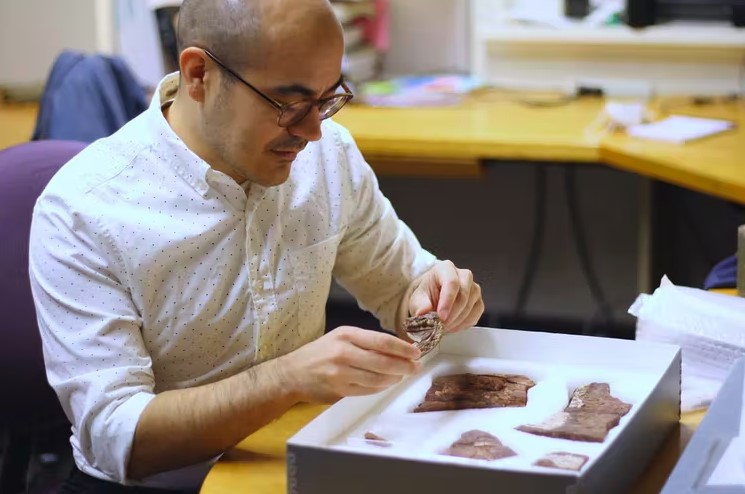Skeletons tell how an animal lived
Qikiqtania reveals a lot about a critical period in our lineage’s history. Its scales tell researchers unambiguously that it was living underwater. They show sensory canals that would have allowed the animal to detect the flow of water around its body. Its jaws tell us that it was foraging as a predator, biting and holding onto prey with a series of fangs and drawing food into its mouth by suction.
But it is Qikiqtania’s pectoral fin that is most surprising. It has a humerus bone, just as our upper arm does. But Qikiqtania’s has a very peculiar shape.
Early tetrapods, like Tiktaalik, have humeri that possess a prominent ridge on the underside and a characteristic set of bumps, where muscles attach. These bony bumps tell us that early tetrapods were living on the bottom of lakes and streams, using their fins or arms to prop themselves up, first on the ground underwater and later on land.
Qikiqtania’s humerus is different. It lacks those trademark ridges and processes. Instead, its humerus is thin and boomerang-shaped, and the rest of the fin is large and paddle-like. This fin was built for swimming.
Whereas other early tetrapods were playing at the water’s edge, learning what land had to offer, Qikiqtania was doing something different. Its humerus is truly unlike any others known. My colleagues and I think it shows that Qikiqtania had turned back from the water’s edge and evolved to live, once again, off the ground and in open water.
Evolution isn’t a march in one direction
Evolution isn’t a simple, linear process. Although it might seem like early tetrapods were trending inevitably toward life on land, Qikiqtania shows exactly the limitations of such a directional perspective. Evolution didn’t build a ladder toward humans. It’s a complex set of processes that together grow the tangled tree of life. New species form and they diversify. Branches can head off in any number of directions.

Neil Shubin, who found the fossil, pointing across the valley to the site where Qikiqtania was discovered on Ellesmere Island.
This fossil is special for so many reasons. It’s not just miraculous that this fish was preserved in rock for hundreds of millions of years before being discovered by scientists in the Arctic, on Ellesmere Island. It’s not just that it’s remarkably complete, with its full anatomy revealed by serendipity at the cusp of a global pandemic. It also provides, for the first time, a glimpse of the broader diversity and range of lifestyles of fishes at the water-to-land transition. It helps researchers see more than a ladder and understand that fascinating, tangled tree.
Discoveries depend on community
Qikiqtania was found on Inuit land, and it belongs to that community. My colleagues and I were only able to conduct this research because of the generosity and support of individuals in the hamlets of Resolute Bay and Grise Fiord, the Iviq Hunters and Trappers of Grise Fiord, and the Department of Heritage and Culture, Nunavut. To them, on behalf of our entire research team, “nakurmiik.” Thank you. Paleontological expeditions onto their land have truly changed how we understand the history of life on Earth.
COVID-19 kept many paleontologists from traveling and visiting field sites across the world these last few years. We’re eager to return, to visit with old friends, and to search again. Who knows what other animals lie hidden, waiting to be discovered inside blocks of unassuming stone.
Thomas Stewart, assistant professor of biology, Penn State.



3175x175(CURRENT).thumb.jpg.b05acc060982b36f5891ba728e6d953c.jpg)


Recommended Comments
There are no comments to display.
Join the conversation
You can post now and register later. If you have an account, sign in now to post with your account.
Note: Your post will require moderator approval before it will be visible.